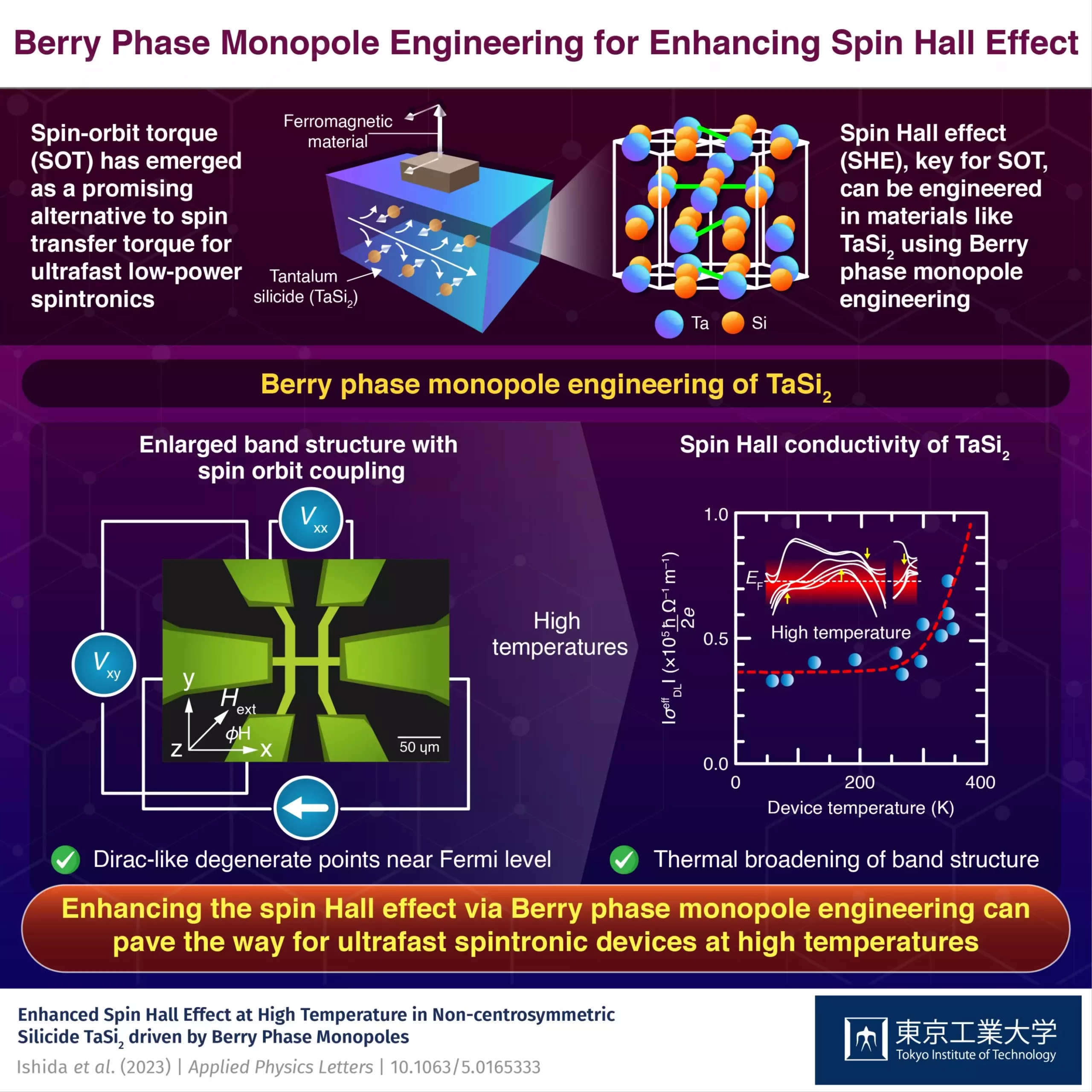Spintronic devices have garnered significant interest in recent years for their ability to achieve high-speed processing and low-cost data storage. These devices utilize the spin of electrons to carry and manipulate information. Spin-transfer torque has been a key phenomenon enabling ultrafast and low-power spintronics. However, a promising alternative called spin-orbit torque (SOT) has emerged. This article explores recent research on the influence of Dirac band hot spots on the temperature dependence of SOT in tantalum silicide (TaSi2) and the potential of Berry phase monopole engineering in non-magnetic materials for high-temperature spintronic devices.
In non-magnetic materials, the spin Hall effect (SHE) has been identified as a crucial factor in achieving spin-orbit torque. The existence of a “Dirac band” structure, which refers to the specific arrangement of electrons in terms of their energy, contributes to the large spin Hall effect in these materials. The Dirac band structure contains “hot spots” for the Berry phase, a quantum phase factor responsible for the intrinsic SHE. Thus, materials with suitable Berry phase hot spots are pivotal for engineering the SHE.
Investigating the Influence of Dirac Band Hot Spots
A team of researchers from Tokyo Institute of Technology led by Associate Professor Pham Nam Hai conducted a study on the influence of Dirac band hot spots on the temperature dependence of SHE in TaSi2. The researchers aimed to explore the potential of Berry phase monopole engineering in enhancing the efficiency of SOT at high temperatures, which could be crucial for the development of high-temperature spintronic devices.
Unexpected Findings: Temperature Dependence of SOT in TaSi2
Through various experiments, the team observed that the SOT efficiency of TaSi2 remained relatively stable from 62 K to 288 K, resembling the behavior of conventional heavy metals. However, an intriguing change occurred when the temperature increased further. The SOT efficiency suddenly doubled at 346 K, accompanied by a similar increase in the corresponding SHE. These findings deviated from the behavior observed in conventional heavy metals and their alloys.
Unveiling the Role of Berry Phase Monopoles
Upon further analysis, the researchers attributed the sudden increase in SHE at high temperatures to Berry phase monopoles. These monopoles play a critical role in enhancing the SOT efficiency and offer a potential strategy for high-temperature spintronic devices. The findings from this study provide insights into the efficacy of Berry phase monopole engineering and how it can effectively utilize the SHE in non-magnetic materials.
The discovery of Berry phase monopole engineering opens up new pathways for the development of high-temperature, ultrafast, and low-power SOT spintronic devices. One potential application highlighted by Dr. Hai is the magneto-resistive random-access memory (MRAM), which could benefit from efficient high-temperature SOT. This research paves the way for further exploration of materials with suitable Dirac band hot spots and advances in Berry phase monopole engineering to harness the full potential of spintronics.
The study conducted by Dr. Hai and his team sheds light on the influence of Dirac band hot spots on the temperature dependence of SHE in TaSi2. The unexpected increase in SOT efficiency and SHE at high temperatures, attributed to Berry phase monopoles, showcases the potential of Berry phase monopole engineering for high-temperature spintronics. These findings serve as a stepping stone towards the development of high-temperature, ultrafast, and low-power spintronic devices, opening up new avenues for research and practical applications in the field of spintronics.


Leave a Reply